
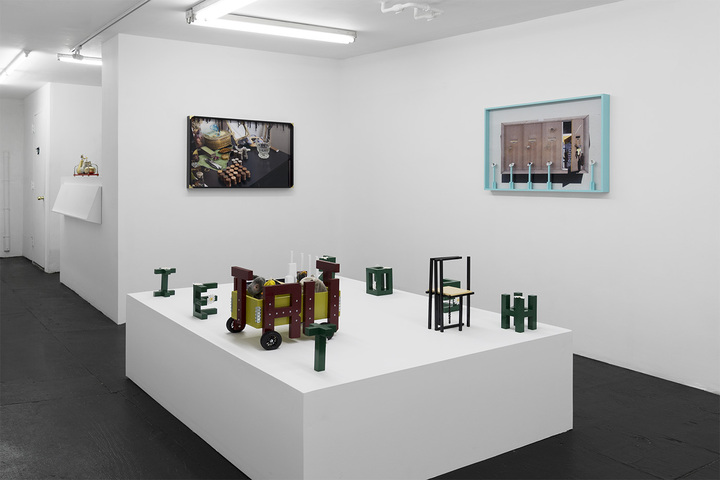
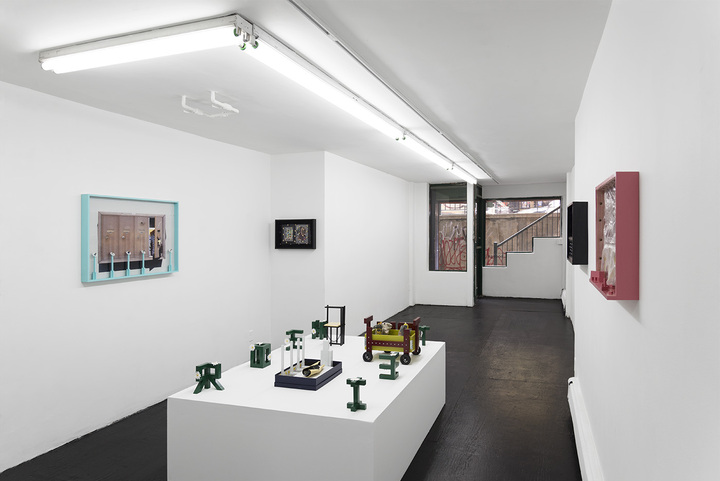
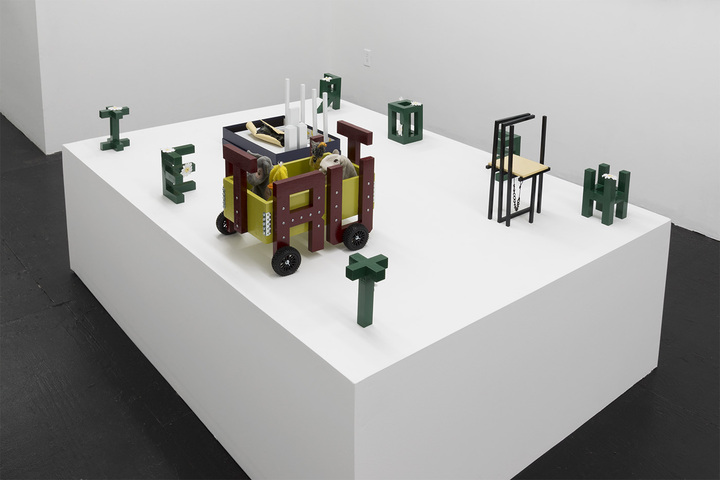
Theorie, 2017
Wood, enamel, fabric flowers, nails
Dimensions variable, each letter approx. 6h x 4w x 4d in.
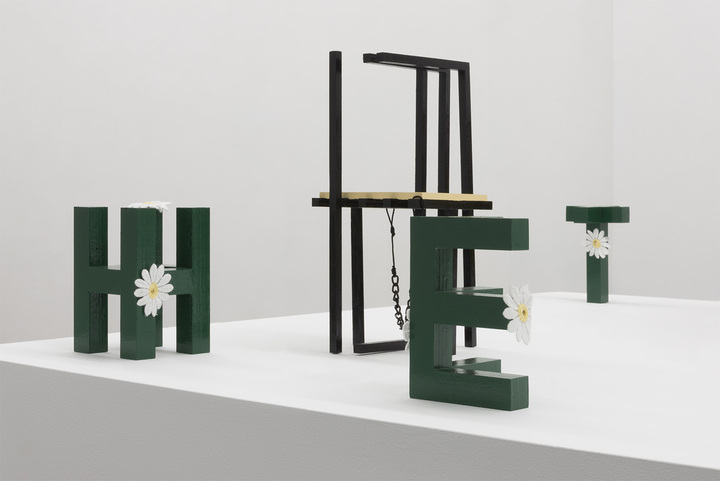
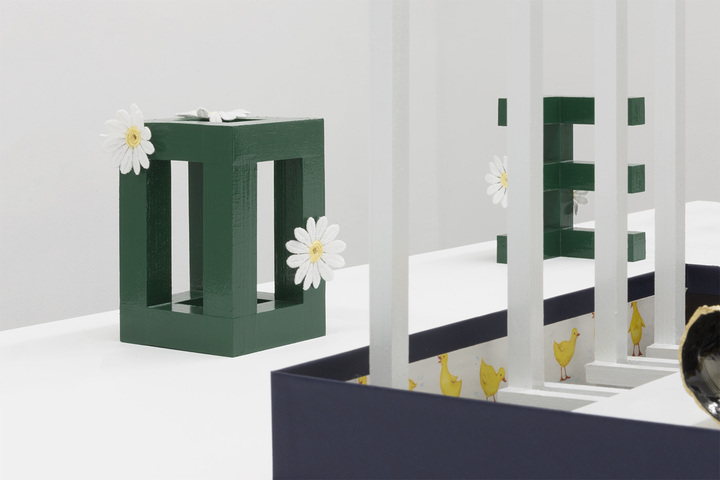
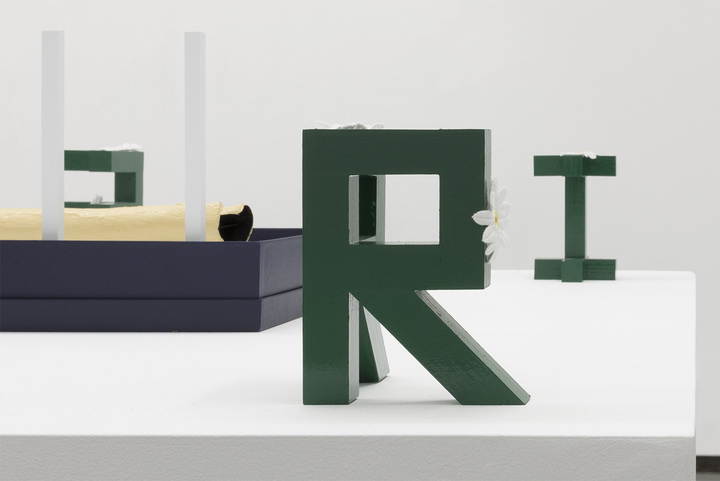
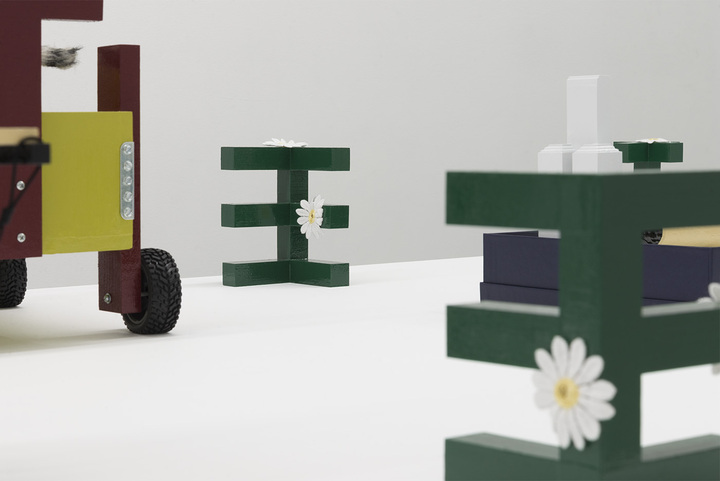
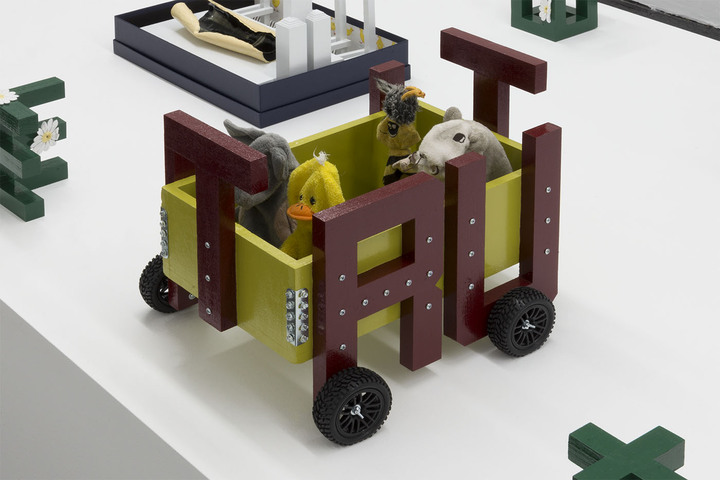
Truth Trolley, 2017
Wood, enamel, dog toys, hardware, plastic, rubber
11.5h x 13w x 15.5d in.
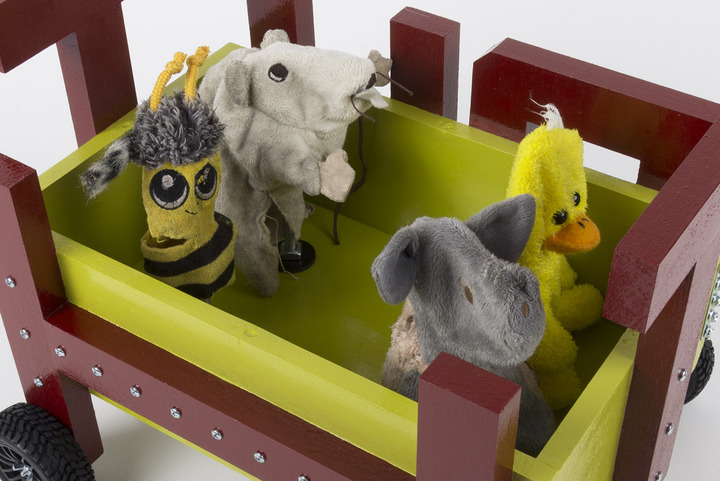
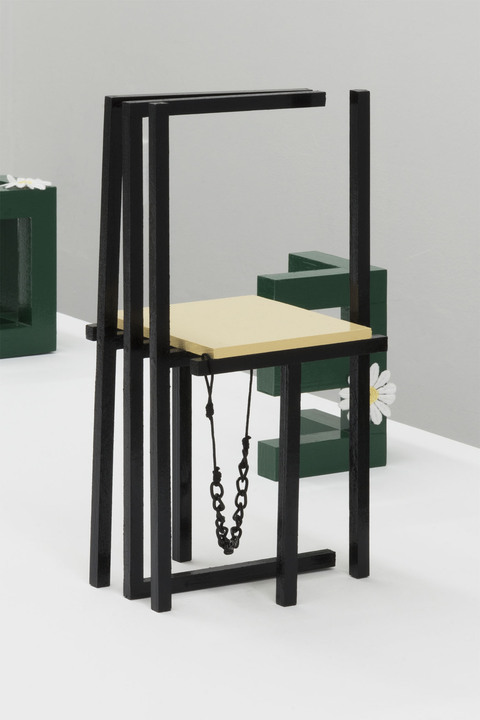
Theft, 2017
Wood, enamel, nipple chain
13h x 6.5w x 6d in.
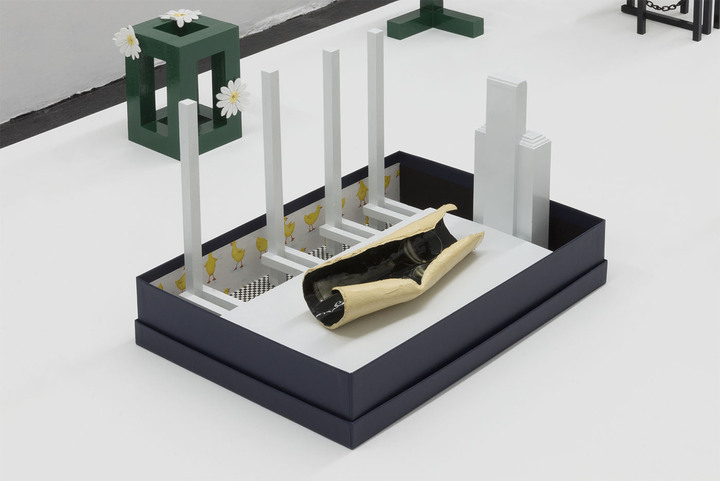
BBs, 2017
Wood, enamel, photocopy transfer, acrylic, bark, paper, cardboard box
9.5h x 16w x 11d in.

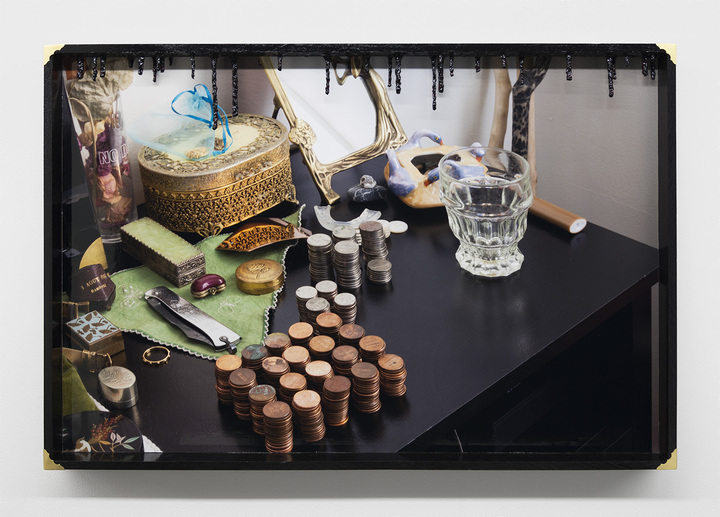
Cheers from now and a thousand years, 2017
C-print, wood, enamel, hardware
25h x 37w x 2.5d in.
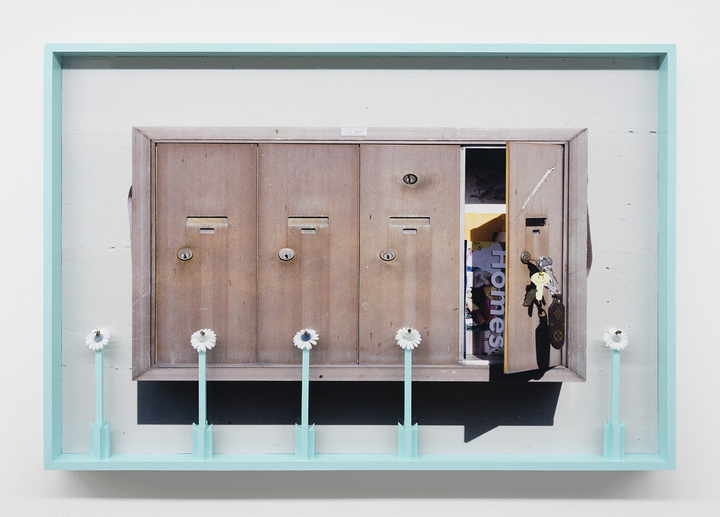
Scoot further further enough, 2017
C-print, wood, enamel, fabric flowers, bees
25h x 37w x 2.5d in.
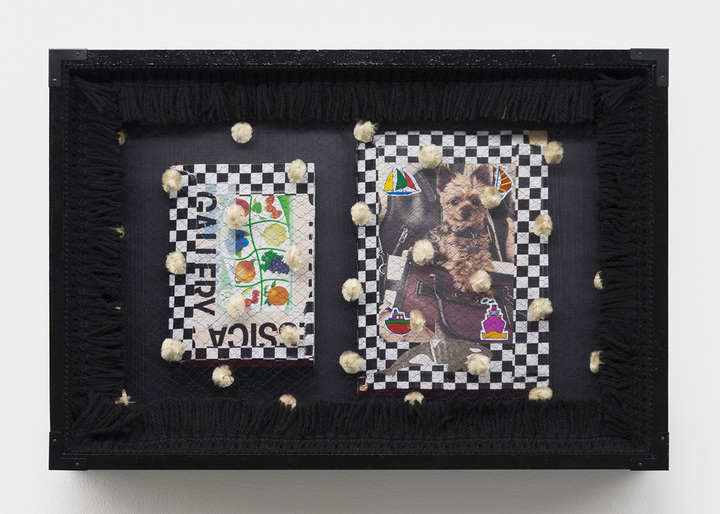
Days shall be formed and no one in them, 2017
C-print, wood, enamel, lace, wool, hardware
14h x 20.5w x 2.5d in.
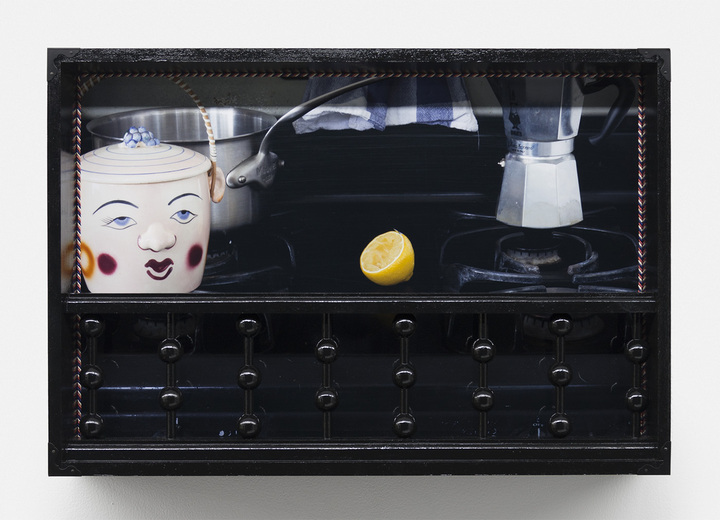
Eat well or rest easy or, 2017
C-print, wood, enamel, silk, hardware
16h x 23.5w x 3.5d in.
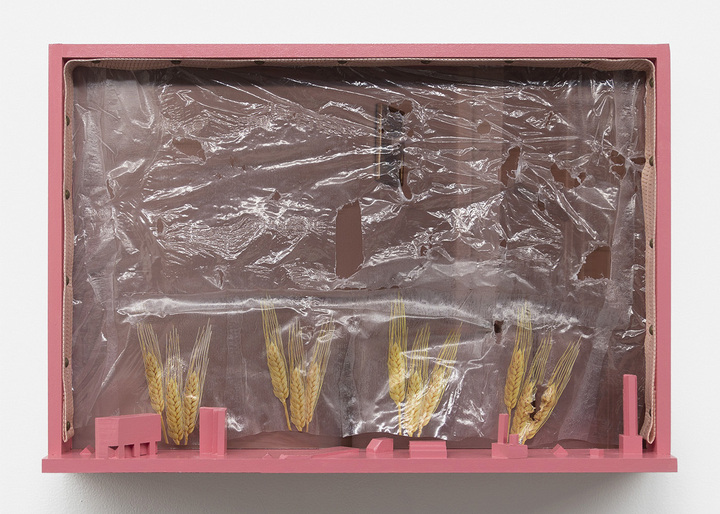
Pleasure chose exile in this vile and quaint clime, 2017
C-print, wood, enamel, bread bags, strawbraid, hardware
16h x 23.5w x 3.5d in.
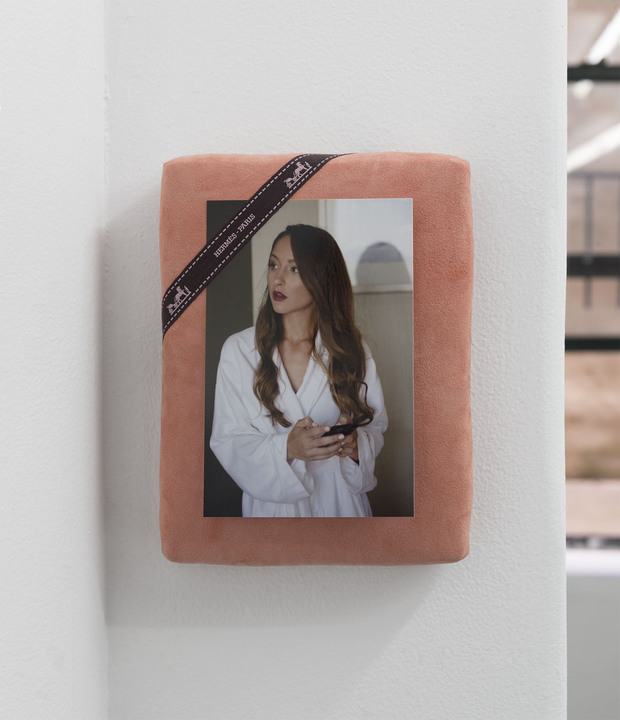
Allie at the Bonaventure, October 2015, 2017
C-print, suede, batting, Hermès ribbon, on panel
7.5h x 5w x 1d in.

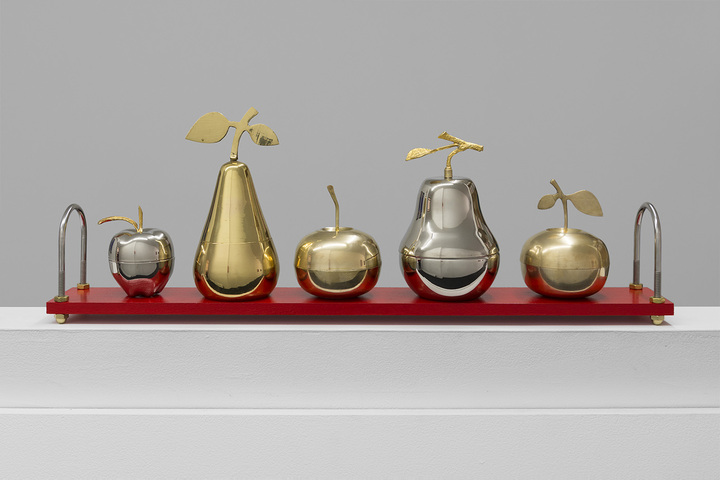
Bonbons Rivington, 2017
Brass and silverplate containers, Jelly Belly beans (Kiwi, Juicy Pear, Mango, Crushed Pineapple, Peach), wood, enamel, hardware
9h x 26.5w x 3.5d in.
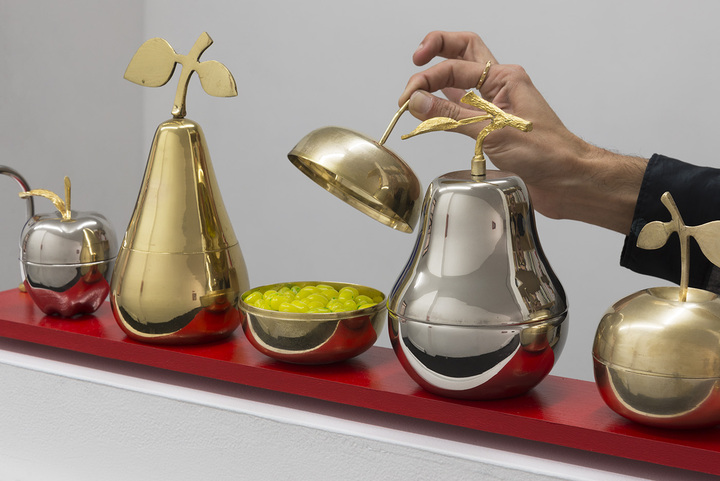

From the perspective of pink saltation, 2017
C-print, wood, enamel
20.5h x 15.5w x 2.5d in.
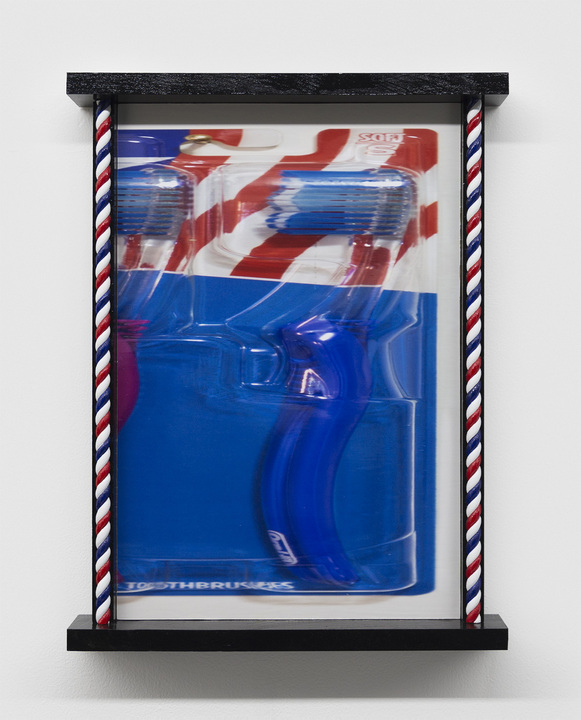
From the perspective of blue saltation, 2017
C-print, wood, enamel
20.5h x 15.5w x 2.5d in.

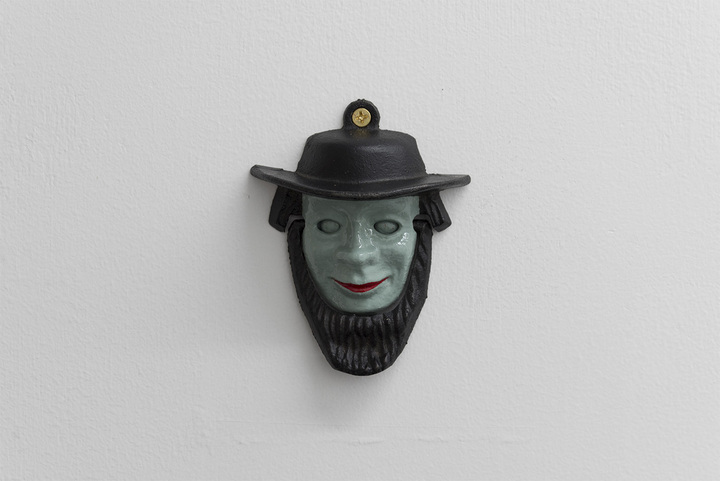
Truth, Theft, Theorie: three words take shape and arrange on a plinth. In the abstract, they're words that are heavy on concept and light on the tongue—but Naoki Sutter-Shudo foregrounds the concrete. "TRUTH" wraps around itself to emblazon a wagon, or war machine, for critters. "THEFT" wraps too, though more somberly; its T's are load-bearing. Meanwhile "THEORIE" disperses her letters, accented with daisies, making this French theory quite literally 'flowery.' Acting less like signage and more like signatures, these words have ditched legibility for personality, preferring expression to communication. They wind down personal, associative burrows, far exceeding their duty to denote.
Style's not a supplement, and ornament isn't fluff. It's the details of how something arrives to us that make it what it is exactly: an antique tinged by decades of soft use, a coin worn down by your hand and others', a word pushed through the vocal cords of someone very special to you. In much of America, there's suspicion toward more conscious examples—we're wary of "put-ons," which we oppose to realness. But maybe our especially streamlined alphabet helps us forget that, elsewhere, accentuations and inflections aren't foppish or fussy but substantive, transformative: in French they're the difference between eels (congres) and Congress (congrès); in Japanese, they're the phonetic difference between a persimmon (柿, /kaki/) and an oyster (牡蠣, /ka↓ki/). The absence of inflection is just as high-stakes as its inclusion.
From this vantage point, you can read minimalism, sans-serifs, white cubes, all as pathological theatres of distillation—an ornament of absence, but ornate nonetheless. The way I see it, Sutter-Shudo's work raises this point by running in the opposite direction, toward the heart of adornment, into a theatre of "and." There, the rhythm and texture are closer to the feeling of Home: things and decisions pile up, however slowly, deepening the roots of your specificity—your life as you've lived it in sum, so far.
All the show's photographs were taken in the artist's home. So, in Eat well or rest easy or, the sugar jar is not 'a' sugar jar, it's 'this' sugar jar; the lemon is not 'a' lemon but 'that' lemon, squeezed on that day. The glass by a very famous artist actually gets used (for flowers). That the photographs' frames take on their own excesses, becoming more active and sculptural, seems a way of matching their scenes—to partake in the particularity of a home, to do something more than contain.
Embellishment has many functions. As the photo-dioramas show, it can annotate, or anoint, or conceal, to name just a few possibilities. It's slippery, which can be exciting—and in an age of austerity measures, maybe reductionism doesn't always feel quite as right. When you get to the candy dishes in the back of the gallery, ask yourself, if you decide to indulge: what's a jelly bean without its flavoring, its dyes, its shape?
–Nick Irvin
Naoki Sutter-Shudo (b.1990, Paris) lives and works in Los Angeles. Recent exhibitions include Ashes/Ashes, Los Angeles, CA; The Sunroom, Richmond, VA; Jessica Silverman Gallery, San Francisco, CA; Los Angeles Contemporary Archive, Los Angeles, CA; and Mortadelle, Arles, France. He is the cofounder of Holoholo, a publishing house based in Paris, and the exhibition space Bel Ami, opening soon in Los Angeles.